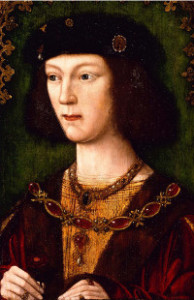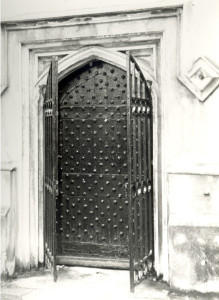Music in Tudor Walthamstow
At the time when Henry VIII was spending his father’s legacy on bringing both London and the Royal Palaces to the highest level of luxury and taste, Walthamstow was still a country village. It was a good place, too, for people who had made a fortune in London to buy a house and land so their children could grow up in healthier air.
This is a resource to support school groups learning local and Tudor history at KS2. It is designed to be used in conjunction with the information panels. A pdf of this resource and class activity can be downloaded by clicking the link below:
Tudor-Walthamstow-teachers-resource.pdf
 At the time when Henry VIII was spending his father’s legacy on bringing both London and the Royal Palaces to the highest level of luxury and taste, Walthamstow was still a country village – or, more accurately, a string of hamlets joined by lanes. Church End, where the church was and is, was one of these. A time traveller from the present day would find the nights dark, the roads muddy and the buildings few and unfamiliar.
At the time when Henry VIII was spending his father’s legacy on bringing both London and the Royal Palaces to the highest level of luxury and taste, Walthamstow was still a country village – or, more accurately, a string of hamlets joined by lanes. Church End, where the church was and is, was one of these. A time traveller from the present day would find the nights dark, the roads muddy and the buildings few and unfamiliar.
Click to here to read the information panel ‘Growing London’
The church was in the same place but the windows and doors and stonework different. The house one day to be called the Ancient House was a farmhouse surrounded by meadows and fields. High Street and Hoe Street were in the same places, but lined only with a few substantial houses. There was no Lea Bridge Road, and anyone wanting to travel to London needed either to go south to Stratford and cross the Bow Bridge or cross the River Lea by the ferry at Tottenham. For those wanting to save the price of the ferry fare or bridge toll, there was always the Black Path from Walthamstow to the City. This was the drovers’ road where animals were driven to be sold at the London markets.
For the information panel on Tudor Walthamstow click here
But this was a privileged area, with prosperous farms, many producing some of the already immense quantities of produce needed to feed London. It was a good place, too, for people who had made a fortune in London to buy a house and land so their children could grow up in healthier air.
Two of the Bassanos did just that, acquiring at least two houses and plots of farmland, one near what is now the High Street and the other in the Wood Street area. The Bassanos became well respected members of the local community for several generations.
To read ‘Venice and the Bassanos’ about the family’s life before they came to England click here
While we do not have detailed descriptions of the Bassanos’ house, it is very likely to have been a timber framed house similar to the one now known as the Ancient House, which was rebuilt in the years before the Bassanos’ arrival, and which was typical of the area. If so, it was a hall house, with a central living area and with extensions on each end, one for the kitchens and the other for private space and bedrooms for the family. By the time the Bassanos came to Walthamstow the house might well have had brick chimneys and a separate dining room for the family rather than the whole household, including the servants, eating together every day. There would certainly have been several living-in servants to do the work of the house, and more to run the home farm that would have produced much of the food for the household.
To read more about the Bassano family coming to England, click here
At this time anyone who could afford it would eat as much meat or fish as they could. This, though, was cooked in many different ways – joints were appreciated, but so were spiced stews and pies. Better-off people would eat vegetables in season, for example a dish of peas or asparagus. And everyone would eat vegetable broth in winter when food was short, especially after a bad harvest. Everyone ate a lot of bread, fine white manchet for the grandest, coarse rye bread for those at the bottom of the social heap, and something resembling modern wholemeal for those in between. There were, as yet, no potatoes, tomatoes or tea or coffee or chocolate. Most people drank ale (not yet beer) with most meals, with wine for the better off. Fruit was regarded with suspicion as being indigestible, and usually cooked before eating.
At this time, as we have seen, most music and entertainment happened at home. And everyone expected to sing, dance and, ideally, would play one or more musical instruments.
For more information on Tudor music making click here
There were Bassanos in Walthamstow for at least a hundred years – one of them had to pay extra tax in 1615 instead of helping to maintain local roads. And in London, there were Bassanos living at their house in Mark Lane until at least the 1640s.
To read more on what happened to the Bassano family after the Tudor period click here
Music Resources
Pastime-with-Good-Company-score.pdf
